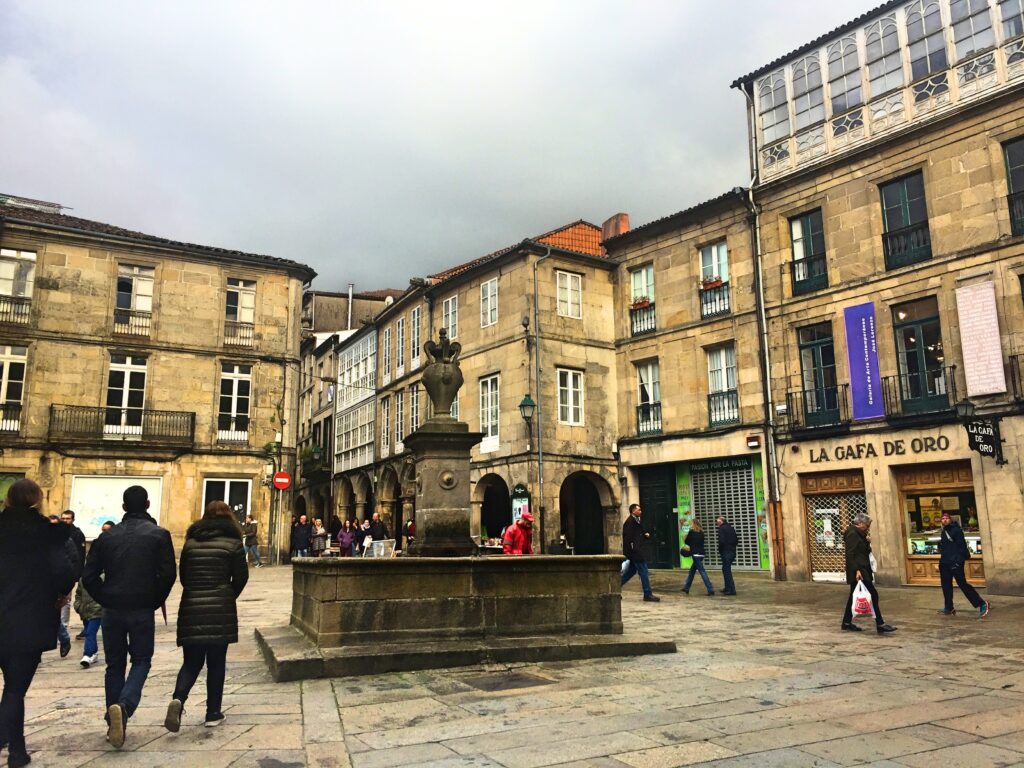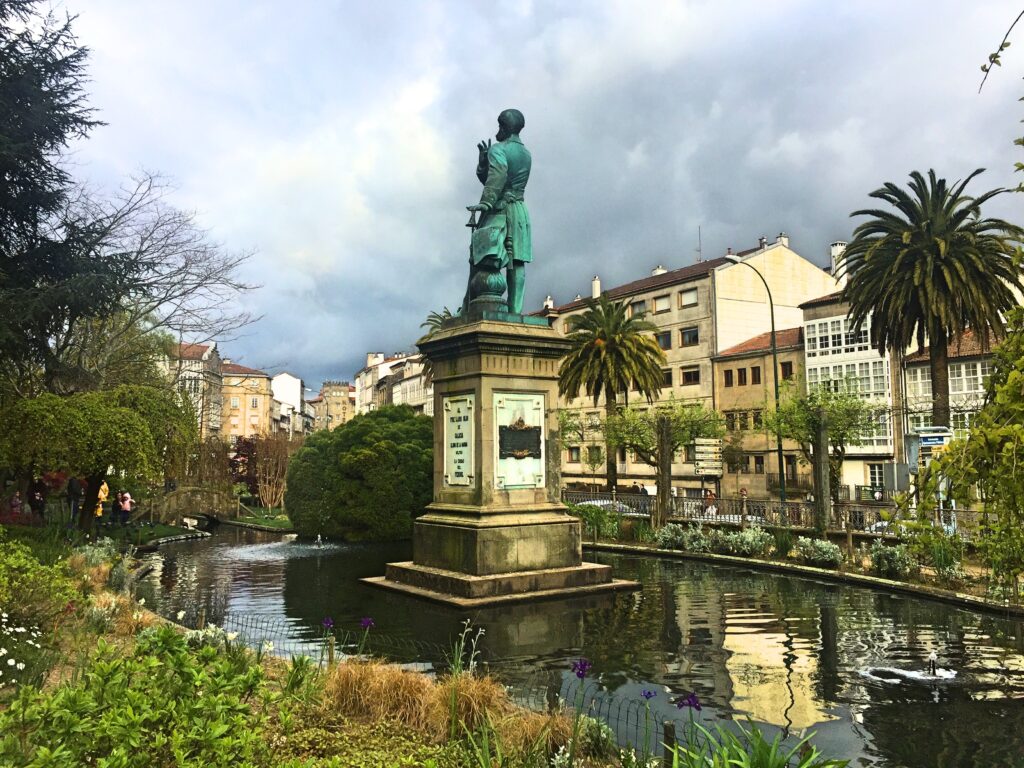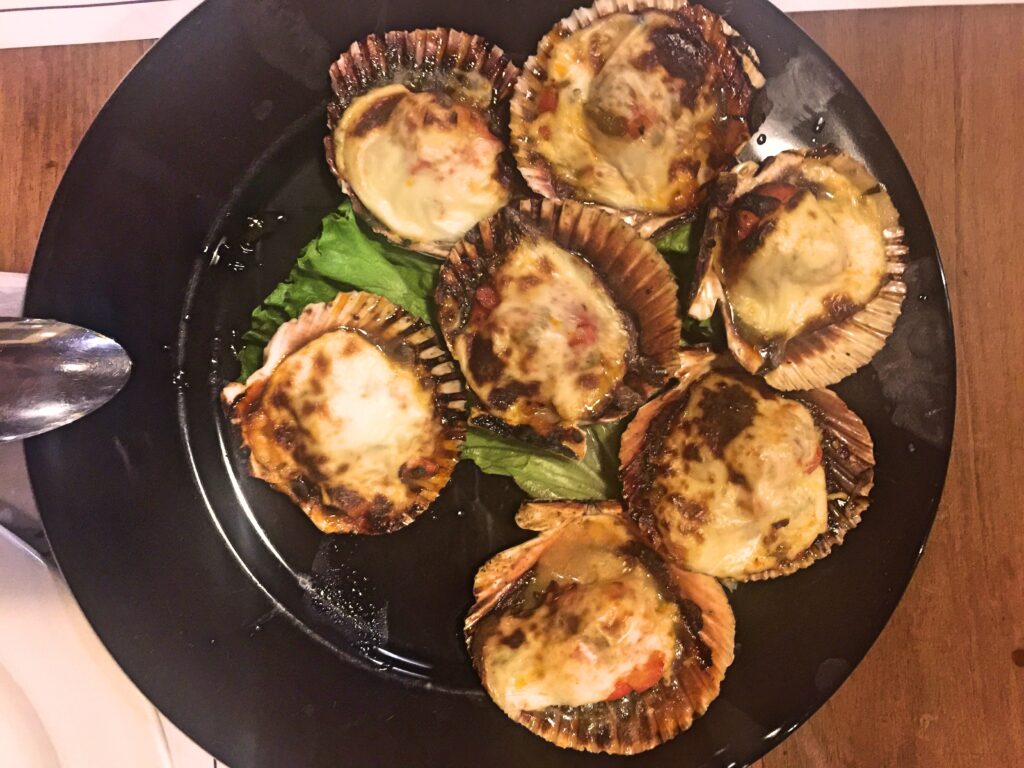Every year, millions of people from around the world walk the Camino de Santiago, journeying toward Santiago de Compostela, the capital of Galicia and the final stop on this ancient pilgrimage route. Nestled among Galicia’s endless green landscapes, this city has been shrouded in magic and mysticism ever since the tomb of the Apostle James (Santiago) was discovered here in the 9th century.
At the heart of the city stands the majestic Cathedral of Santiago de Compostela, a landmark that leaves no one unmoved. However, beyond its spiritual and historical significance, what truly captivates visitors is Santiago’s vibrant university life and rich cultural scene.
Whether you’re arriving as a pilgrim or a curious traveler, here’s everything you need to see in Santiago de Compostela on a weekend getaway.
July is the month in which the most important events are concentrated as part of the program of the Festivities of the Apostle Santiago, declared of International Tourist Interest. We walk through its streets to discover the essence of Santiago.

Day 1 in Santiago de Compostela
Santiago de Compostela is located between the Rías Altas and the Rías Bajas of the province of A Coruña and has a humid but mild climate that varies depending on the season.
Due to the beauty of its historic center and its status as one of the main religious and cultural destinations, the Galician capital was recognized as a UNESCO World Heritage Site in 1985. Plazas, palaces, and churches comprise the historic center of the city, while modern shops, parks, and gardens bring tranquility to the newer areas.
Your itinerary begins at the Santo Domingo de Bonaval Park, one of the havens of peace that border the historic center and from where you can see the roofs that outline the city. Two museums give access to the park: the Galician Center of Contemporary Art and the Museum of the Galician People. The first, a modern building trying to achieve conjunction with nature, hosts exhibitions of contemporary artists. The Museum of the Galician People, on the other hand, is located in an old convent and collects the history, culture, and traditions of Galicia. Which one do you choose?
After the incursion through nature and museums, walk five minutes to Cervantes Square. This space has served as a meeting place for the people in the 11th century, as a point to perform autos-da-fé and administer justice in times of the Inquisition and, centuries later, as a place to trade. The square highlights the fountain presided over by the bust of Cervantes and the only municipal baroque building that remains in Galicia, the seat of the City Hall until 1787.
Stroll through the streets of the area and discover the old faculties that occupy impressive buildings in the old part. Let yourself be captivated by its libraries with shelves full of books and history. Don’t you feel like enrolling in one of them?

Head to Rúa das Ameas to see two curious shops: Myka, with beautiful home decoration, and Sr. Nilsson, from which you will not leave without taking some of the accessories for men and women that are coquettishly displayed in the small shop. You also cannot miss buying the typical products of Galician crafts that you will find distributed in the shops of Rúa Nova, such as the well-known Sargadelos ceramics, the lace of the Bolillos shop, and the silver jewelry of Ámboa.
Having vermouth has become a tradition of Compostela Saturdays. Is it Saturday? Do not hesitate and have one at Embora and another accompanied by the vibrant rhythms that the DJ plays at the La Radio bar, why not?
If the vermouth has whetted your appetite, Abastos 2.0 is a tavern with current airs with a very varied menu of 21 euros with prior reservation. In case you have not booked, you can order several dishes to share. Another equally exquisite option is to taste fresh market products, freshly prepared seafood, and the rich octopus offered by the pulpeiras in their copper pots.
Surely between the vermouths and the rich Galician specialties you have gained strength to continue exploring Santiago!
Have the purchases tasted little to you? Walk to Rúa de Santiago del Estero. Who Killed Bambi? is a contemporary fashion store for young people with very attractive designs. In the adjacent streets you will see all kinds of shops of well-known brands: Bershka, Mango, Intimissimi, Pull&Bear, Bimba y Lola,
And to get a Galician wine cellar, in Concepción Valladares Souto (Rúa de la República de El Salvador 14) they will recommend the best albariños.
The visit continues at the Collegiate Church of Santa María la Real de Sar. Near the sadly unfinished City of Culture of Galicia and on the banks of the Sar River, this wonderful example of Romanesque architecture is located. Church and cloister built from the 12th century in an unbeatable environment.
At dusk, return to the historic center to look for the Pilgrim’s Shadow. Legend has it that a shadow accompanies pilgrims during the Camino de Santiago, but it is in the Plaza de la Quintana where you can only meet it. A silhouette dressed in typical medieval pilgrim clothing emerges at the foot of the cathedral. Have you found it?

Plaza de Quintana is one of the four that surround the Cathedral and is divided into Quintana de Vivos and Quintana de Muertos; the latter was a burial place until 1780. The next is Plaza de Platerías, named after the goldsmiths who had their workshops here in the Middle Ages. In the center, the Fountain of the Horses and in the background the Casa del Cabildo form an essential image around the majestic Cathedral. Leave for the end the most impressive, that of Obradoiro. This square is considered the monumental center of Santiago and the place where the solemn baroque facade of the Cathedral welcomes pilgrims. To its left, the Hostal de los Reyes Católicos, a former pilgrims’ hospital converted into a National Parador. In front, the Raxoi Palace houses the city’s Town Hall.
It’s time for dinner, and, due to its proximity and quality, A Horta D’Obradoiro becomes the perfect option to savor the flavors of the land, prepared by the hands of chefs Eloy Cancela and Francisco Kike Piñero. A 17th-century building converted into a cozy restaurant perfect for intimate dinners or with friends.
At night, the university atmosphere permeates the city, and Santiago is a perfect city to go out partying.
Start the march with folk music at Casa das Crechas (Vía Sacra 3) or have a daiquiri with the concerts at Sala Riquela (Rúa del Preguntoiro 35). Does your body ask for more? Continue at the Pub Atlántico (Rúa Fuente de San Miguel 9), a reference of Santiago’s nightlife.
Day 2 in Santiago de Compostela
Face your second day with the energy of a good breakfast and the relaxation of nature at Quinta da Auga, a charming hotel-spa located on the outskirts of Santiago.
Then head to the viewpoint of Alameda Park, where the lush bushes intermingle with the views of an enviable university campus and the Cathedral standing out from the amazing panoramic view. Dedicate a few minutes to walk through the park or simply to observe the surroundings and listen to secrets sitting on the Lovers’ Bench.

The next stop is the University of Santiago de Compostela, headquarters of Fonseca College and the former home of Archbishop Alonso de Fonseca. The building, with a Renaissance facade and Gothic statues, encloses a beautiful courtyard surrounded by a cloister. Just a six-minute walk away, you will visit the Monastery or Pazo de San Lorenzo de Trasouto, a set of monastic buildings from the 13th century that was declared a National Monument in 1979.
With a 20-minute walk, you will stand at the Costa Vella hotel. Here, a well-deserved refreshment or coffee awaits you in a garden full of charming corners to disconnect in the middle of the city. Isn’t it perfect?
Plaza de la Inmaculada is the last of the squares that surround the Cathedral and that you have yet to visit. The Church and Monastery of San Martiño Pinario are the protagonists. Founded in the 10th century by Benedictine monks, they are a great example of Galician Baroque. Continue the second day’s route by visiting the interesting Museum of Pilgrimages, located in the former Bank of Spain building in Plaza de las Platerías, which displays valuable art pieces.
As you have now been able to verify, gastronomy is one of the rich foundations of Galician culture. Seafood, veal, and fish are served in restaurants, taverns, inns, and markets that adapt to all budgets. Two restaurant recommendations are close for today’s visit: A Moa and A Maceta, located in Rúa de San Pedro, at the gates of the old town. Both are well known among the people of Santiago and serve signature dishes in their dining rooms and gardens.

For dessert, we’ve saved the most essential visit in Santiago de Compostela. Can you guess what it is? Of course—the Cathedral, the heart of the city and the final destination of the Camino de Santiago. Tradition holds that this is the resting place of the Apostle James (Santiago in Spanish), which is why the number of pilgrims arriving here grows year after year.
The Cathedral is home to the Botafumeiro, the largest censer in the world. Weighing over 50 kilograms, it requires the strength of more than eight people to set it swinging—a breathtaking ritual not to be missed.
Beyond the Botafumeiro, visitors can explore the mausoleum where the Apostle’s relics are said to rest, the main altar, the museum, the cloister, and the crypt. For a truly unique view, climb up to the rooftops of the Cathedral and take in the city from above.
Among the Cathedral’s many entrances, the Holy Door stands out. It opens only during a Holy Year, also known as a Xacobeo Year—a year in which July 25, the feast of Saint James, falls on a Sunday. The next Holy Year was celebrated in 2021.
And so, this fantastic journey comes to an end. We hope this guide has helped you make the most of your time in Santiago, and perhaps inspired
Recommended Hotels
Experience the classic elegance of the Eurostars Araguaney, an icon in Santiago. Enjoy luxurious rooms, exquisite gastronomy, and a privileged location. Perfect for those looking for a sophisticated experience in the heart of the city.
Escape the hustle and bustle and relax at A Quinta Da Auga, an oasis of tranquility on the outskirts of Santiago. This luxury spa hotel will captivate you with its natural surroundings, its rejuvenating treatments, and its romantic charm. Ideal for a wellness getaway.
For modern travelers, the Eurostars San Lazaro offers contemporary comfort and style. Its strategic location, near the Congress Palace, makes it perfect for business stays or to explore the city with ease. Enjoy its functional facilities and its cozy atmosphere.
